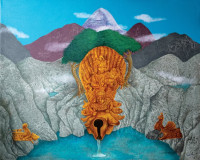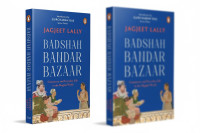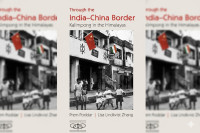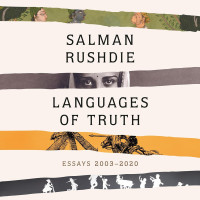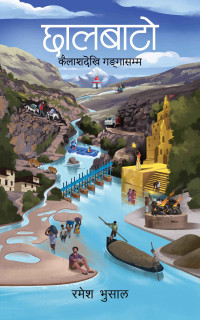Books
Archiving culinary traditions
Prashanta Khanal, the founder of the food blog ‘Gundruk’, discusses his travels throughout the country while documenting Nepali food culture.
Timila Maharjan
Prashanta Khanal founded the food blog ‘Gundruk’, where he shares stories and recipes of Nepali cuisine, its culture, and history. He is also the author of ‘Timmur: Stories and Flavours from Nepal’ (2022).
In this conversation with the Post’s Timila Maharjan, Khanal discusses exploring and documenting Nepali food culture and the inspiration behind ‘Gundruk’ and ‘Timmur’.
When did you begin writing about food and recipes? Was there a specific moment that ignited this passion?
Growing up surrounded by various food cultures, I have always been eager to explore new cuisines. Around 2012-13, I began writing about Nepali cuisine through my blog ‘thegundruk.com’. There, I shared recipes for the dishes I prepared. However, it soon evolved into a platform for archiving recipes and food stories from various regions of Nepal.
My discovery of Kinema (fermented soybeans) inspired me to explore Nepali food culture. I was aware that Japan, Korea, and Indonesia ferment soybeans, but I did not know that Kirat communities in Nepal also do so. It made me realise how little I knew about my own country. I learned that the practice of fermenting soybeans in Nepal originates in China’s Yunnan region.
What was your research process for ‘Timmur’ like? How did you gather recipes and contextual stories from such a wide array of communities across Nepal?
I never intended to write a cookbook. I began by documenting some lesser-known traditional ethnic recipes for my blog, which eventually evolved into a cookbook. I gathered recipes by conversing with people and observing them cook. Food is at the heart of my travels.
Food culture, like any culture, is dynamic. It is shaped by cross-cultural interactions, migration, and trade, leading to continual evolution. I feel that culture flourishes through connections rather than in isolation. Occasionally, a few recipes, like daal-bhat, become staples in our daily fare. To grasp traditional recipes and culinary practices, I frequently inquire about the foods people grew up eating and the traditional dishes they may no longer prepare or have forgotten.
I discovered the cuisines of various communities at food festivals held during significant celebrations, like Tharu’s Magh/Maghi festival in Tundikhel.
What challenges did you face in documenting recipes rooted in oral traditions and often not written down?
Documenting recipes was not inherently difficult. The real challenge was uncovering each recipe’s history and origins, understanding why people cook them, their cultural significance, and their evolution. I aimed to create a cookbook that served as more than just a recipe collection. Unfortunately, there is a lack of literature on Nepali food culture and its historical context. I struggled to gather information about food history, the cultural importance of various dishes, and the subtle cultural differences among diverse ethnic groups.
I aimed to ‘connect the dots’ by compiling fragmented information from Nepal and nearby regions to gain insight into Nepal’s elusive food history. I investigated the similarities in food practices across various Asian countries and their potential journey to Nepal. For instance, the Limbu culture of consuming yangben (lichen) is akin to traditions in Yunnan, China, where some historians suggest that the Limbu’s ancestors migrated to Nepal’s eastern hills from Yunnan. Thus, the practice of eating lichen likely originated there.
Additionally, regarding the history of batuk (black lentil patties) in Nepal, food historian KT Acharya noted that vada is an ancient dish in India, detailed in ‘Dharma Sutras’ from 800-300 BC, known as vataka in Dravidian language.
How do you see the relationship between literature and food? How can literature contribute to preserving food culture?
I see literature and food as vital expressions of identity. In our culture, we show love and gratitude through culinary offerings. As society changes rapidly, literature plays a crucial role in documenting traditional recipes and stories, safeguarding them from oblivion, reviving valuable indigenous culinary wisdom, and sharing these culinary treasures and tales across communities and countries.
For instance, the Chepang community has mastered making inedible toxic wild tubers safe by boiling them with alkaline firewood ash and soaking them in running water for an extended period. Likewise, the Limbu people know how to transform wild lichen into safe and delicious food.
For some individuals who are disconnected from their roots for various reasons, food literature can help them reconnect with their culture and history. Beyond recipes, food literature encourages a broader understanding of food and, most importantly, of ourselves: our history and origins, philosophies, ideas, and politics. Food literature nurtures our appreciation and respect for each other’s food cultures.
Being from both Brahmin and Newa backgrounds, how has your culture influenced your perspective on food and culinary traditions? Has it influenced your writing?
Growing up in a multicultural family with differing food traditions deepened my appreciation for Nepal’s cultural diversity. My parents come from communities with opposite food practices. In one, consuming alcohol and buffalo meat is seen as a social taboo. Conversely, in other cultures, alcohol and buffalo meat play a central role in their culinary heritage and are even presented as offerings to ancestral deities. At home, we honoured and embraced both cultures, even forging a third culture that blended elements of each.
Our values, beliefs, history, environment, and society significantly influence our food culture. Humans created the concepts surrounding food—like what is considered pure or impure. Certain discriminatory and oppressive practices must be dismantled, as no food culture is superior.
Prashanta Khanal’s book recommendations
The Nutmeg’s Curse
Author: Amitav Ghosh
Publisher: University of Chicago Press
Year: 2021
Centred on environmental issues, this book discusses the interesting link between the climate crisis and Western colonialism.
Shark’s Fin and Sichuan Pepper
Author: Fuschia Dunlop
Publisher: WW Nortan & Company
Year: 2008
This memoir explores Chinese cuisine, focusing on Sichuan. It celebrates the nation’s vibrant yet often overlooked culinary traditions.
Invitation to a Banquet
Author: Fuschia Dunlop
Publisher: WW Nortan & Company
Year: 2023
Dunlop explores the history, philosophy, and techniques behind the culinary culture of China.
Between Meals: An Appetite for Paris
Author: AJ Liebling
Publisher: North Point Press
Year: 1959
American writer Liebling reflects on his indulgent eating and drinking in 1920s Paris, praising its culinary scene while offering critiques.
All Roads Lead North
Author: Amish Raj Mulmi
Publisher: Context
Year: 2021
Mulmi writes insightfully about Nepal’s long geopolitical and cultural relationships with its two neighbours, China and India, with a focus on the former.




 8.12°C Kathmandu
8.12°C Kathmandu
